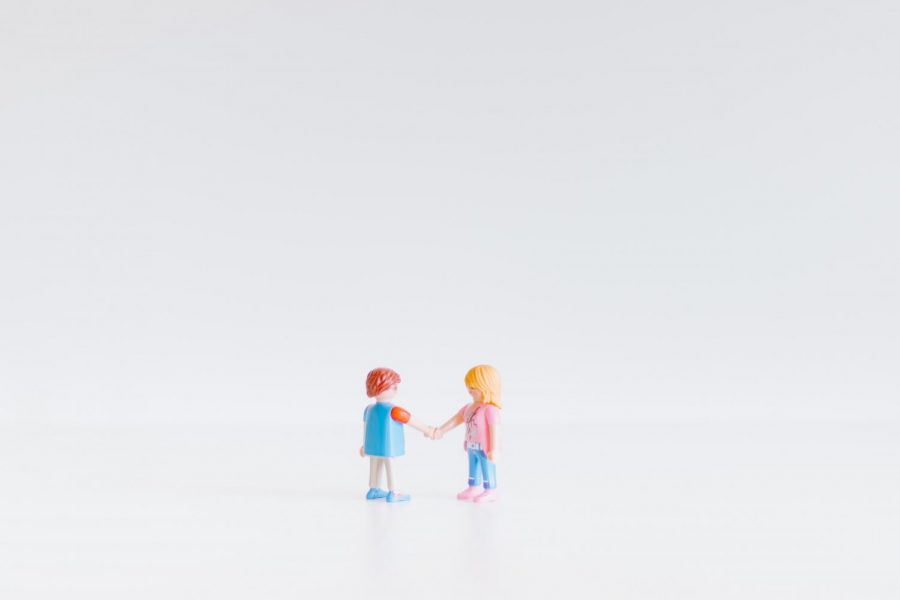What will Happen to the Handshake?
What is going to happen to the cultural practice, known as the handshake? It is a simple greeting that commences an interaction at a business meeting, an interview, a birthday party dinner with the in-laws—the list goes on.
I was first introduced to the importance and implications of a handshake from my boyfriend at the time, who happened to be in the military. He told me that a strong, firm handshake and direct eye contact signified a strong, capable person (implied: man).
Though I was neither in the military, nor a big, strong man, I couldn’t help but internalize this and alter my own handshake. I began to strengthen the grip of my slender hand and made sure to look people right in the eye with a bright smile. I began to present myself as a confident, direct young woman. I began to believe it.
It’s interesting how assuming such a simple act allowed me to change the way I felt and carried myself in professional settings, as well as in my social life.
There are many ways of shaking another person’s hand– and thus many interpretations. The handshake was first used in ancient Greece as a sign of peace among men to show that neither was carrying a concealed knife or weapon. For the most part in western cultures today, we shake with our right hand. Members of Scout and Guide organizations shake their left hands as a token of friendship as the left is closest to the heart. In some other cultures, shaking with the left hand is considered unhygienic due to well… toilet etiquette.
There have even been appropriate ways to shake hands with the opposite gender. In a GQ advice column published in 2000, one man expressed concern over shaking hands with women in business situations due to hand size and pressure. The response was that it is proper for a woman to offer her hand first, and if she does, then you must shake her hand as you would a man’s. According to GQ, “The whole point of a handshake is to convey trust, balance and equality, not to show dominance or submission.” Interesting.
The main value of handshakes in western cultures seems to lie in the physical connection and its implications. Holding the hand of another person—friend or stranger—seems to form a sense of intimacy, mutuality and familiarity between both parties.
Nowadays, when I watch shows or movies and see characters touch, hold hands and speak to each other without masks, I mentally cringe. I have found myself wondering ‘how we will ever return to a place where physically interacting with other humans is normal?’ In a time where we all seem to crave more connection among each other, how else can we create this initial sense of acknowledgement and in some cases, respect?
A possible solution may be the fist bump. Even before the pandemic, handshaking seemed to have been on the decline in professional settings as fist bumps became increasingly fashionable and popular. In a 2010 survey commissioned by the PURELL hand sanitizer brand, two in five Americans hesitated to shake hands with someone out of fear of germs, and almost half of Americans (49%) preferred the fist bump over a classic handshake.
In this line of thinking, there are many other cultures that have adopted and utilized alternate, non-contact methods of greeting. In India and Nepal, people use the phrase, “Namaste” accompanied with a mudra, in which the person presses their upward-pointing palms together. The wai—pressing one’s hands together with a bow of the head—is a similar gesture used in Thailand and can even be used in dances and expressions of apology. People in Zambia use a cup-and-clap greeting in which a person cups their hands together and claps a few times, while saying “Mulibwanji.” In Japan, bowing is the most common form of non-contact greeting. The degree in which one bows communicates intentions, such as a simple greeting, respect to a superior or client, deep sorrow or respect.
As the world currently attempts to gradually recover and emerge from mass quarantines and stay-at-home orders, it will be interesting to see whether the handshake returns or if a new form of greeting, such a first bump or head nod, is adopted. Either way, this pandemic will most likely result in revolutionary cultural shifts as we reevaluate and reshape the ways in which greet each other, if we do so at all.






